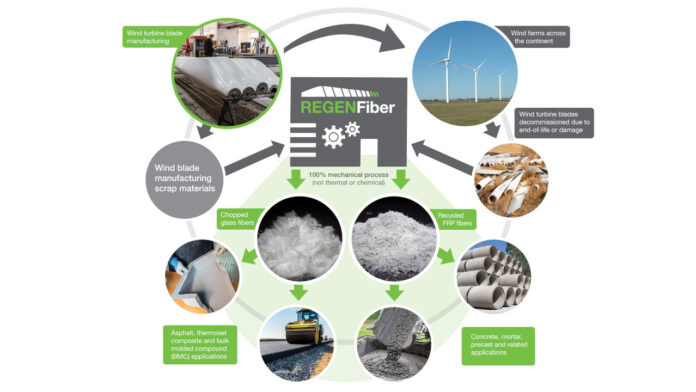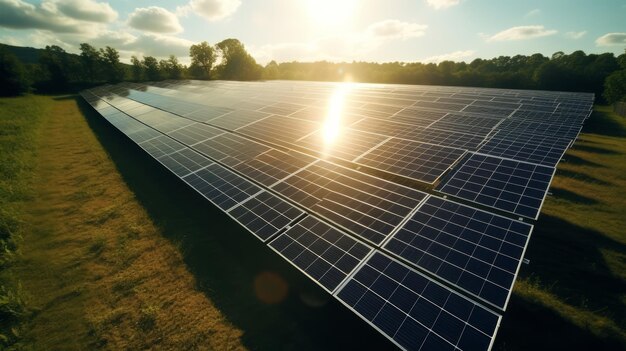
Wind Turbine Recycling: Challenges and Solutions for a Greener Future
Wind power is a superstar in the world of clean energy. With their majestic blades silently spinning against the sky, wind turbines are a powerful symbol of our shift away from fossil fuels. They produce electricity without burning fuel, releasing harmful emissions, or consuming vast amounts of water. It’s truly a game-changer!
However, like all technologies, wind turbines have a lifespan, typically around 20 to 25 years. As the first generation of these giants reaches the end of their useful life, a new challenge emerges: what do we do with them? This is where wind turbine recycling comes into play. It’s a critical piece of the puzzle to ensure that wind energy remains truly sustainable, from cradle to grave.
Let’s dive into the fascinating world of wind turbine recycling, exploring the hurdles we face and the clever solutions being developed to overcome them.
The Rise of Wind Power and the End-of-Life Question
Over the past few decades, wind energy has grown at an incredible pace. We’ve seen a surge in wind farms both on land (onshore) and at sea (offshore), producing a significant portion of our electricity in many countries. This rapid growth means that soon, a large number of turbines will need to be decommissioned – taken down and replaced with newer, more efficient models, or simply retired.
Why is recycling crucial now?
- Growing Volume: Thousands of turbines are expected to reach end-of-life in the coming years. Without proper recycling, this would lead to massive landfill waste.
- Sustainability Promise: For wind power to be truly "green," its entire lifecycle, including disposal, must be environmentally responsible.
- Resource Conservation: Turbines contain valuable materials that can be reused, reducing the need to mine new resources.
What Are Wind Turbines Made Of? Understanding the Challenge
To understand the recycling challenge, it’s helpful to know what makes up a typical wind turbine. They are surprisingly complex machines, but their components can be broadly categorized:
- The Tower (80-85% of total weight): This is the tall, hollow structure that supports the turbine. It’s mostly made of steel, a highly recyclable material.
- The Nacelle (around 10-15%): This is the box at the top of the tower, housing the "brains" of the turbine. It contains:
- Gearbox: Steels and other metals.
- Generator: Copper, steel, magnets (sometimes rare earth elements).
- Electronics: Various metals and circuit boards.
- Casing: Often fiberglass or other composites.
- The Blades (5-7%): These are the long, aerodynamic parts that catch the wind. This is where the biggest recycling challenge lies! Wind turbine blades are primarily made from composite materials, especially fiberglass (glass fibers embedded in a plastic resin, often epoxy or polyester).
- The Foundation: This is the concrete base anchoring the turbine to the ground. While concrete can be crushed and reused as aggregate, it’s not typically part of the "turbine" recycling process itself, but part of site decommissioning.
The Key Takeaway: While the tower and most of the nacelle components are relatively easy to recycle (as they are mostly steel, copper, and other metals), the turbine blades present a unique and significant hurdle.
The Big Hurdles: Challenges in Wind Turbine Blade Recycling
The composite materials used in wind turbine blades are fantastic for their job: they are incredibly strong, lightweight, and durable, allowing for those massive, efficient blades. However, these very properties make them difficult to recycle.
Here are the main challenges:
-
Composite Complexity:
- Thermoset Resins: The plastics (resins) used in blades are "thermoset," meaning once they are molded and hardened, they can’t be easily melted down and reshaped like common plastics (thermoplastics). It’s like baking a cake – you can’t un-bake it into flour and eggs.
- Fiberglass & Resin Bond: The glass fibers are strongly bonded within the resin. Separating these two materials efficiently is very difficult.
-
Size and Logistics:
- Massive Blades: Turbine blades are enormous, often 60-80 meters (200-260 feet) long, and getting longer! This makes transportation from wind farms to recycling facilities incredibly challenging and expensive. Special permits and oversized transport vehicles are often required.
- Disassembly: Taking down a turbine and separating its components on-site requires specialized equipment and expertise.
-
Cost:
- Developing and implementing advanced recycling technologies for composites can be expensive.
- The current cost of recycling blades is often higher than simply sending them to a landfill, which creates a financial barrier.
-
Lack of Infrastructure:
- There aren’t enough dedicated, large-scale facilities specifically designed to handle the complex recycling of wind turbine blades in many regions.
- The technology is still evolving, and scaling it up to meet the demand is a significant task.
-
Market for Recycled Materials:
- Even if materials are successfully separated, finding a strong, consistent market for the recycled fiberglass and resin components can be a challenge. The quality of recycled composites might not always meet the standards for new high-performance applications.
Innovative Solutions: Paving the Way for a Circular Future
Despite the challenges, a lot of brilliant minds are working on innovative solutions to make wind turbine recycling a reality. The goal is to move towards a circular economy, where materials are kept in use for as long as possible, reducing waste and conserving resources.
Here are some promising solutions:
-
Mechanical Recycling:
- How it works: This is the simplest method. Blades are shredded or ground into smaller pieces.
- What it’s used for: The resulting material can be used as a filler in concrete, asphalt, or as a reinforcing material in other products (e.g., manhole covers, railway sleepers).
- Pros: Relatively low cost, established technology.
- Cons: Doesn’t separate the fibers from the resin, so the material loses some of its original strength and value.
-
Co-processing in Cement Kilns:
- How it works: Pieces of turbine blades are fed into cement kilns alongside traditional fuels and raw materials. The organic (resin) part burns, providing energy for the cement production, while the mineral (fiberglass) part becomes part of the clinker (the main component of cement).
- Pros: Efficiently uses both the energy and material content of the blades, reduces waste, and lowers the carbon footprint of cement production. It’s a proven technology already in use.
- Cons: It’s a form of "downcycling" where the original materials aren’t fully recovered for high-value applications.
-
Chemical Recycling (Advanced Methods):
- How it works: These processes aim to break down the composite materials at a molecular level, separating the valuable glass fibers from the resin, or even breaking down the resin into its original chemical components.
- Pyrolysis: Heating the material in an oxygen-free environment. The resin turns into oils, gases, and char, while the glass fibers remain largely intact.
- Solvolysis: Using specific solvents (liquids) under heat and pressure to dissolve the resin, leaving the glass fibers intact.
- Pros: Recovers higher-value materials (clean glass fibers can be reused in new products, and chemical components can be re-synthesized).
- Cons: More complex, higher energy consumption, still largely in the development or pilot phase for large-scale application.
- How it works: These processes aim to break down the composite materials at a molecular level, separating the valuable glass fibers from the resin, or even breaking down the resin into its original chemical components.
-
Repurposing and Upcycling:
- How it works: Instead of breaking down the blades, they are creatively reused for new purposes.
- Examples: Bridges, bus stops, playgrounds, noise barriers, public art installations, furniture, even shelters for livestock.
- Pros: Very sustainable, avoids complex recycling processes, creates unique structures.
- Cons: Limited in scale (only a small fraction of blades can be repurposed), depends on creative ideas and local demand.
-
Design for Recyclability (The Future):
- How it works: This is perhaps the most exciting long-term solution. It involves designing new turbine blades with recycling in mind from the very beginning.
- Strategies:
- Thermoplastic Resins: Using resins that can be melted and reshaped, making them truly recyclable. Companies are already developing blades with these materials.
- Modular Design: Designing blades in sections that can be more easily separated and transported.
- New Materials: Exploring materials like wood, basalt fiber, or even biocomposites that are naturally easier to recycle or biodegrade.
- Pros: Eliminates the problem at the source, creates a truly circular system for future generations of turbines.
- Cons: Requires significant research and development, and a shift in manufacturing processes.
-
Policy and Collaboration:
- Extended Producer Responsibility (EPR): Making manufacturers responsible for the entire lifecycle of their products, including recycling.
- Government Incentives: Offering financial support for recycling infrastructure and research.
- Industry Collaboration: Companies working together to share knowledge, develop standards, and create robust supply chains for recycled materials.
- Certification Schemes: Developing labels or certifications for truly recyclable or sustainably sourced wind turbine components.
The Benefits of a Circular Wind Economy
Embracing robust wind turbine recycling isn’t just about solving a waste problem; it offers a host of benefits:
- Environmental Protection: Reduces landfill waste, conserves natural resources, lowers the carbon footprint of the wind energy sector.
- Economic Opportunities: Creates new jobs in collection, processing, and manufacturing of recycled materials. Fosters innovation and new industries.
- Resource Security: Less reliance on virgin materials means more stable supply chains for critical components.
- Enhanced Sustainability: Solidifies wind power’s reputation as a truly sustainable and responsible energy source, building public trust.
Conclusion
Wind turbine recycling is a complex but solvable challenge. While the initial wave of decommissioned blades has highlighted the issues, it has also spurred incredible innovation and collaboration across the industry. From mechanical grinding to advanced chemical processes and futuristic design-for-recyclability concepts, the solutions are emerging.
By investing in research, developing robust infrastructure, implementing smart policies, and fostering a spirit of collaboration, we can ensure that wind power not only provides clean energy but also upholds the highest standards of environmental responsibility throughout its entire lifecycle. The future of wind energy is not just about generating power; it’s about building a truly sustainable and circular economy for a greener tomorrow.
Frequently Asked Questions (FAQs)
Q1: Are all parts of a wind turbine recyclable?
A1: Most parts of a wind turbine are highly recyclable! The steel tower and the metals in the nacelle (like copper and iron) are relatively easy to recycle using existing methods. The main challenge lies with the composite materials in the blades.
Q2: What is the hardest part of a wind turbine to recycle?
A2: The wind turbine blades are the hardest part to recycle. They are made from composite materials (fiberglass and thermoset resins) that are difficult to separate and break down.
Q3: Why can’t they just burn the blades for energy?
A3: While some blade material can be used in cement kilns as fuel (co-processing), simply burning them in an incinerator is not ideal. It can release harmful emissions and doesn’t recover the valuable materials within the blades, which is a waste of resources. The goal is to find methods that allow for material recovery and reuse.
Q4: Is there a law that requires wind turbine recycling?
A4: Recycling regulations for wind turbines vary by country and region. Some places are starting to implement policies or voluntary agreements to encourage or mandate recycling, especially for the blades. The European Union, for example, is pushing for stricter rules.
Q5: What does "circular economy" mean in the context of wind turbines?
A5: A "circular economy" means moving away from the traditional "take-make-dispose" model. For wind turbines, it means designing them so their materials can be reused, repaired, refurbished, and recycled at the end of their life, keeping valuable resources in use and minimizing waste.



Post Comment